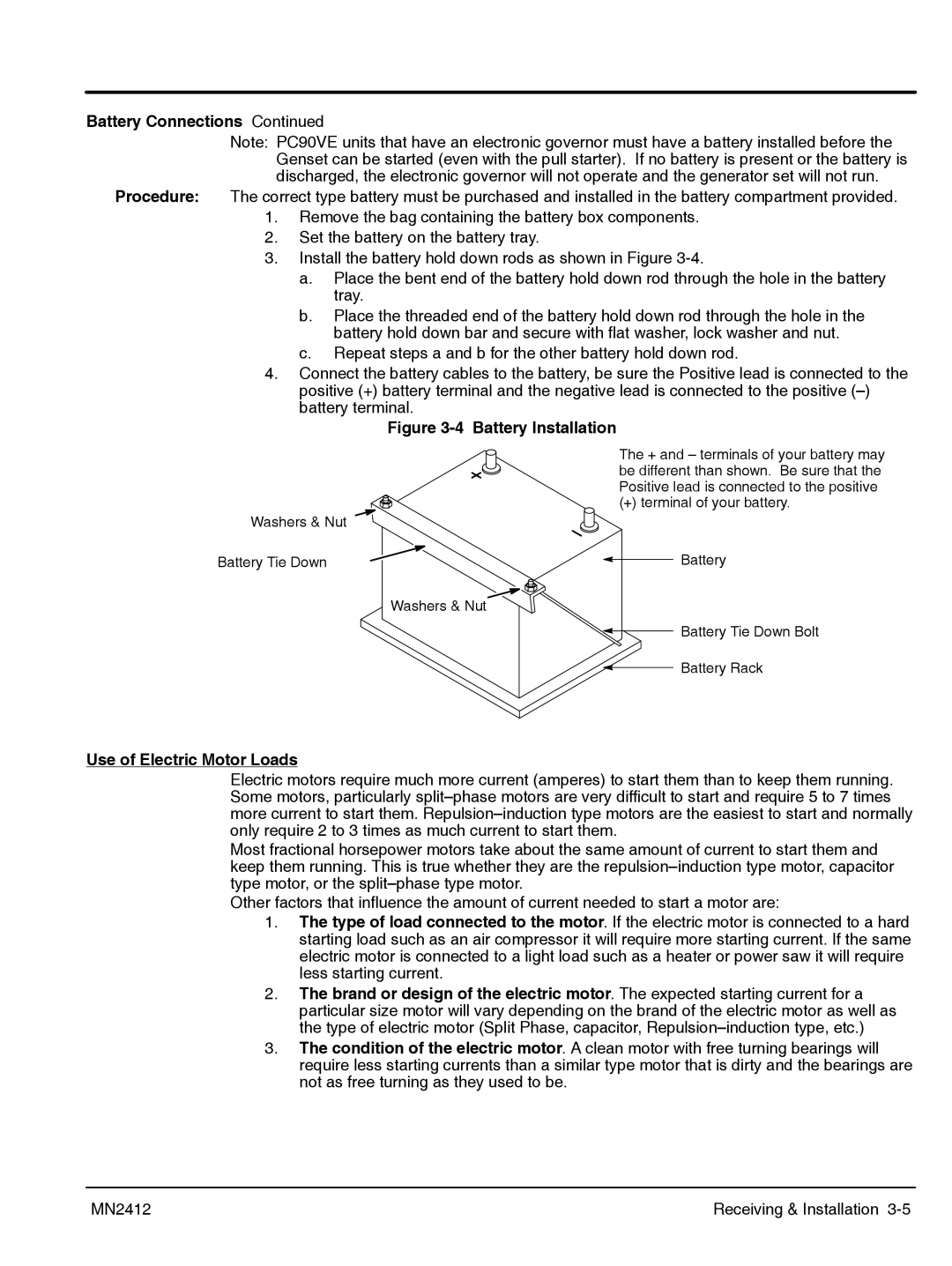MN2412 specifications
The Baldor MN2412 is a premier electric motor known for its high efficiency, rugged construction, and advanced features that cater to various industrial and commercial applications. This motor exemplifies Baldor's commitment to quality, durability, and performance, making it an ideal choice for demanding environments.One of the most notable characteristics of the MN2412 is its efficiency. Engineered to meet stringent NEMA Premium Efficiency standards, the motor reduces energy consumption, thereby lowering operational costs and contributing to a more sustainable environment. The efficient design minimizes heat generation, allowing the motor to operate at safe temperatures even under heavy loads.
The MN2412 features a robust construction made of high-grade materials that ensure longevity. It is equipped with high-quality bearings that provide excellent load-carrying capabilities and extended service life. The enclosure is typically made of durable cast iron, offering protection against dust and moisture while ensuring the motor can withstand harsh operating conditions.
In terms of technology, the Baldor MN2412 incorporates advanced winding designs that enhance performance and efficiency. The windings are coated for enhanced insulation, which helps to resist electrical shorts and prolong the motor's lifespan. Furthermore, the motor is designed with a removable fan cover, making maintenance and repair tasks straightforward and efficient.
Variety in design is another key feature of the MN2412. It is available in various configurations, including different voltages and horsepower ratings, allowing it to be suitable for a wide range of applications—from pumps and fans to conveyors and compressors. Additionally, the MN2412 supports dual-voltage operation, which provides flexibility in installation, allowing it to operate on different power supply systems.
Another significant advantage of the MN2412 is its low noise level. The engineering team has meticulously designed the motor to minimize vibration and operational noise, making it suitable for environments where noise reduction is essential.
The Baldor MN2412 is also integrated with capabilities for use in variable frequency drive (VFD) applications, enhancing its versatility in speed control and operational efficiency. With its adaptability and high performance, the MN2412 stands out as a reliable choice for industries requiring precision and reliability.
In summary, the Baldor MN2412 electric motor combines efficiency, durability, flexibility, and advanced technology, making it an exceptional choice for a variety of industrial applications. Its design ensures maximum uptime and minimal maintenance, contributing to overall operational success.

